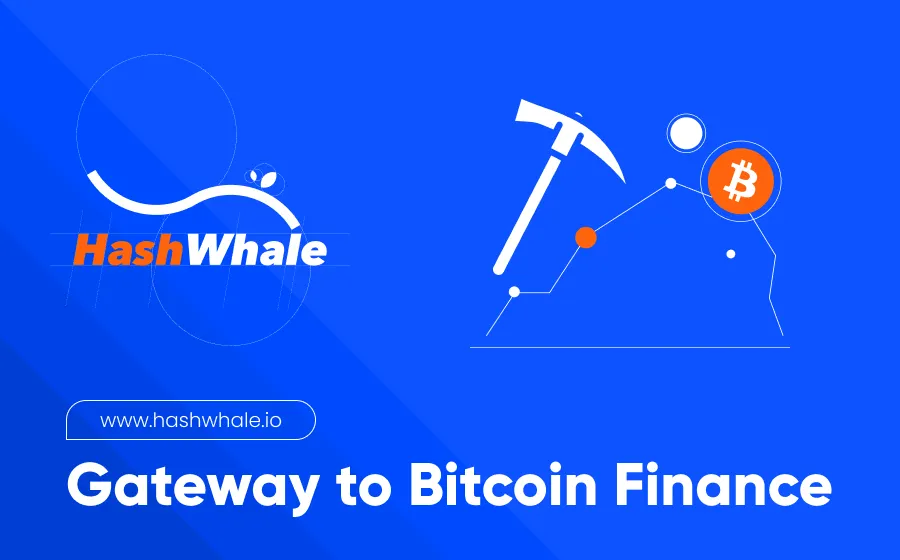
KEYTAKEAWAYS
- BitMine turned Ethereum’s market crash into opportunity, buying over 3 million ETH at lows and building a 2.5% share of total supply.
- During 2025’s crypto crash, BitMine expanded its ETH holdings to 3 million coins, showing strong institutional confidence amid extreme volatility.
- Led by Tom Lee, BitMine used panic to grow its Ethereum empire, proving that fear-driven markets can create long-term value.

- KEY TAKEAWAYS
- I. STORM HITS: THE BRUTAL TEST OF OCTOBER’S “BLACK WEEKEND”
- II. BITMINE’S “WHALE FEAST”: A BOLD REVERSAL WITH CONTRARIAN BUYING
- III. TOM LEE’S “ALCHEMY PHILOSOPHY”
- IV. WHY ETH? DUAL LOGIC OF INSTITUTIONAL NARRATIVE AND VALUATION ANCHOR
- V. UNDER THE SHADOW: PAPER LOSSES AND SYSTEMIC RISK
- VI. DAWN LIGHT: THE GRAND BLUEPRINT FOR A 5% EMPIRE
- VII. CONCLUSION: CRASH AS ALCHEMY, FORGING ENDURING VALUE IN A STORM
- DISCLAIMER
- WRITER’S INTRO
CONTENT

In October 2025, crypto faced a sudden “Black Weekend.” The whole market shook. Ethereum (ETH) fell out of its stable range and hit a yearly low near $3,430. Total liquidations reached about $19 billion. Forced unwinds on leveraged positions, rising geopolitical tension, and macro uncertainty fed into each other. Many investors panicked and sold. In the middle of the chaos, BitMine Immersion Technologies (NYSE: BMNR) moved against the crowd. Led by Tom Lee, the company did not cut losses. It bought more ETH. Its holdings passed 3 million ETH, about 2.5% of total supply.
This move became a test of institutional confidence and a vivid note in ETH’s long-term story. This article explains the timeline, the strategy, and the possible impact. It shows how BitMine turned a crash into an “alchemy” moment. It also looks at what this means for the wider crypto ecosystem.
I. STORM HITS: THE BRUTAL TEST OF OCTOBER’S “BLACK WEEKEND”
From October 11 to 13, 2025, crypto saw one of its sharpest weekly drops ever. Bitcoin briefly fell below $100,000. ETH dropped more than 15% within hours and touched $3,430. The liquidation wave reached about $19 billion. Derivatives leverage broke down. Big exchanges took heavy hits.
Market sentiment collapsed. Retail selling surged. Several triggers came together. A renewed push for tariffs raised global risk aversion. Rate-hike expectations increased. Conflict in the Middle East escalated. These forces pushed investors to reduce risk.
Right after the liquidation peak, ETH showed strength. It rebounded about 20% from the $3,430 low and quickly traded above $4,100. Trading volume rose. This recovery was not random. Institutional flows quietly returned. ETH ETFs saw net inflows again in the days after the drop. Leading altcoins like Solana and Ripple also bounced. Total market value moved back above $4 trillion. Analysts said a Q4 reversal was possible if ETH held the $3,970 area.
Technical signals improved. RSI climbed out of oversold territory. MACD showed a bullish cross. Short-term momentum began to build. Risks still remained. If trade tensions rose again, risk assets could fall. The ETH/BTC ratio could slip below 0.035. The shock did more than move prices. It showed how sensitive crypto is to macro shocks. It also reminded everyone that leverage can turn small sparks into system-wide fires.
II. BITMINE’S “WHALE FEAST”: A BOLD REVERSAL WITH CONTRARIAN BUYING
As fear peaked, BitMine acted. After the October 11 crash, the firm used several new wallets and bought about 128,718 ETH through platforms like FalconX and Kraken. The purchase was worth about $480 million. One week earlier, BitMine had already added more than 200,000 ETH, worth over $800 million.
On-chain data showed the inflows came mainly from institutional custody. BitMine’s wallets became much more active over the weekend. By October 13, the company held 3,032,188 ETH. The average cost was about $4,154 per coin. Cash plus crypto assets totaled about $1.29 billion. The position equaled 2.5% of ETH supply. It meant the firm was halfway to its “5% alchemy” target.
BitMine also held 192 BTC, about $135 million in equity investments, and $104 million in cash. Total assets reached about $1.34 billion. The model looked like MicroStrategy’s Bitcoin playbook, but with ETH. The company raised funds through private placements, mining cash flow, and IPO proceeds. It built a capital loop fast. Tom Lee was the key architect. He is a well-known Wall Street strategist with bold, public crypto calls.
III. TOM LEE’S “ALCHEMY PHILOSOPHY”
Tom Lee said plainly: “This is a golden buying chance. Buy more when prices drop.” He believes BitMine’s strategy rests on long-term faith in the Ethereum ecosystem. ETH is the “world computer.” It should benefit from AI integration, DeFi growth, and Layer-2 upgrades. Dencun and the coming Pectra hard fork aim to cut gas costs and improve scale. This should support wider institutional use.
Lee’s approach is value investing. He wants to buy quality assets at low prices during fear. He links mining efficiency to a growing asset reserve. Immersion cooling lowers energy costs. Savings flow back into ETH purchases. BitMine is shifting from a Bitcoin miner to an ETH “treasury.” This is not only a business update. It is a strategic leap. As a NYSE-listed company, it gives traditional investors a clean way to get ETH exposure. It also pushes crypto institutionalization forward.
IV. WHY ETH? DUAL LOGIC OF INSTITUTIONAL NARRATIVE AND VALUATION ANCHOR
Bitcoin still leads the story, but BitMine chose ETH for clear reasons. First, institutional demand is rising, even if it is quiet. After ETH ETFs launched, inflows exceeded early expectations. BitMine’s buying sent a strong signal. It hinted that major players were shifting positions. Its purchases equaled more than 10% of weekly exchange outflows. This strengthened ETH’s “digital oil” role.
Second, the valuation window looked attractive. The ETH/BTC ratio fell to about 0.036, far below the 2021 peak near 0.08. BitMine showed a paper loss of more than $2 billion at recent prices. Lee called it a temporary technical drawdown. ETH offers yield. Staking earns about 4.5% annualized, while BTC pays zero. Layer-2 total value locked is above $50 billion. DeFi TVL has recovered to about 80% of its peak. These facts support an “ultra-cycle” view for ETH. As AI agents meet blockchains, demand for block space may grow fast.
Third, policy trends help. A more crypto-friendly stance in the U.S. and the rollout of the EU’s MiCA framework add clarity. BitMine’s listed status amplifies the effect. It is the first public company centered on ETH. Pension funds and hedge funds can follow more easily. The stock jumped about 8% in mid-October. The market started to recognize the model.
V. UNDER THE SHADOW: PAPER LOSSES AND SYSTEMIC RISK
The bet still has thorns. First is paper loss pressure. With 3 million ETH, the mark-to-market loss was about $2.25 billion near $4,130. A drop to $3,500 could trigger margin warnings for some financing lines. Second is concentration risk. Holding 2.5% of ETH is like a “shadow central bank.” Any large sale could spark chain reactions and raise volatility.
Regulatory risk is another issue. Authorities may study whether such positions could distort markets in the ETF era. The broader lesson is clear. Leverage and thin liquidity can create a false sense of safety. The $19 billion liquidation wave showed the danger again. Bulls call this a “whale feast.” Bears warn it could sow seeds for the next storm.
From a quant view, daily moves can hit about 10% at a 95% confidence level. If trade tensions rise, ETH could fall another 15%. Paper losses could grow to $3 billion. BitMine has put about 10% of assets into BTC and equities. Even so, ETH remains the core exposure. Concentration needs constant care.
VI. DAWN LIGHT: THE GRAND BLUEPRINT FOR A 5% EMPIRE
BitMine’s ETH buildup is more than a profit push. It marks a shift in the market era. Institutions are here. A crash is not the end. It can be a rebirth. If Tom Lee’s “alchemy” works, it will reshape how investors value ETH. ETH could move from Bitcoin’s shadow to the base layer of the AI age.
ETH now trades above $4,100. Many analysts see a path to $4,500 if volume holds. A run at $5,000 could follow. Looking ahead, BitMine’s 5% goal—about 6 million ETH—would change supply dynamics. Locked supply could lift prices by 20% to 30%, all else equal.
At the same time, the ETH “ultra-cycle” may get energy from several drivers. AI and DeFi will merge. Real-world assets will move on-chain. Global rules will get clearer. In a letter to shareholders, Lee wrote, “ETH is not an asset. It is infrastructure.” If that vision comes true, trillion-dollar capital could flow in. The market could rival gold.
VII. CONCLUSION: CRASH AS ALCHEMY, FORGING ENDURING VALUE IN A STORM
BitMine’s story is a test of contrarian thinking and long-term belief. It says that patience in fear and steady buying in volatility can pay off later. As Tom Lee puts it, “Short-term pain, long-term glory.”
In the winter of 2025, this “buy the dip” saga may become a new MicroStrategy-style legend. The crash hides seeds of new growth. BitMine is trying to turn the storm into gold.












